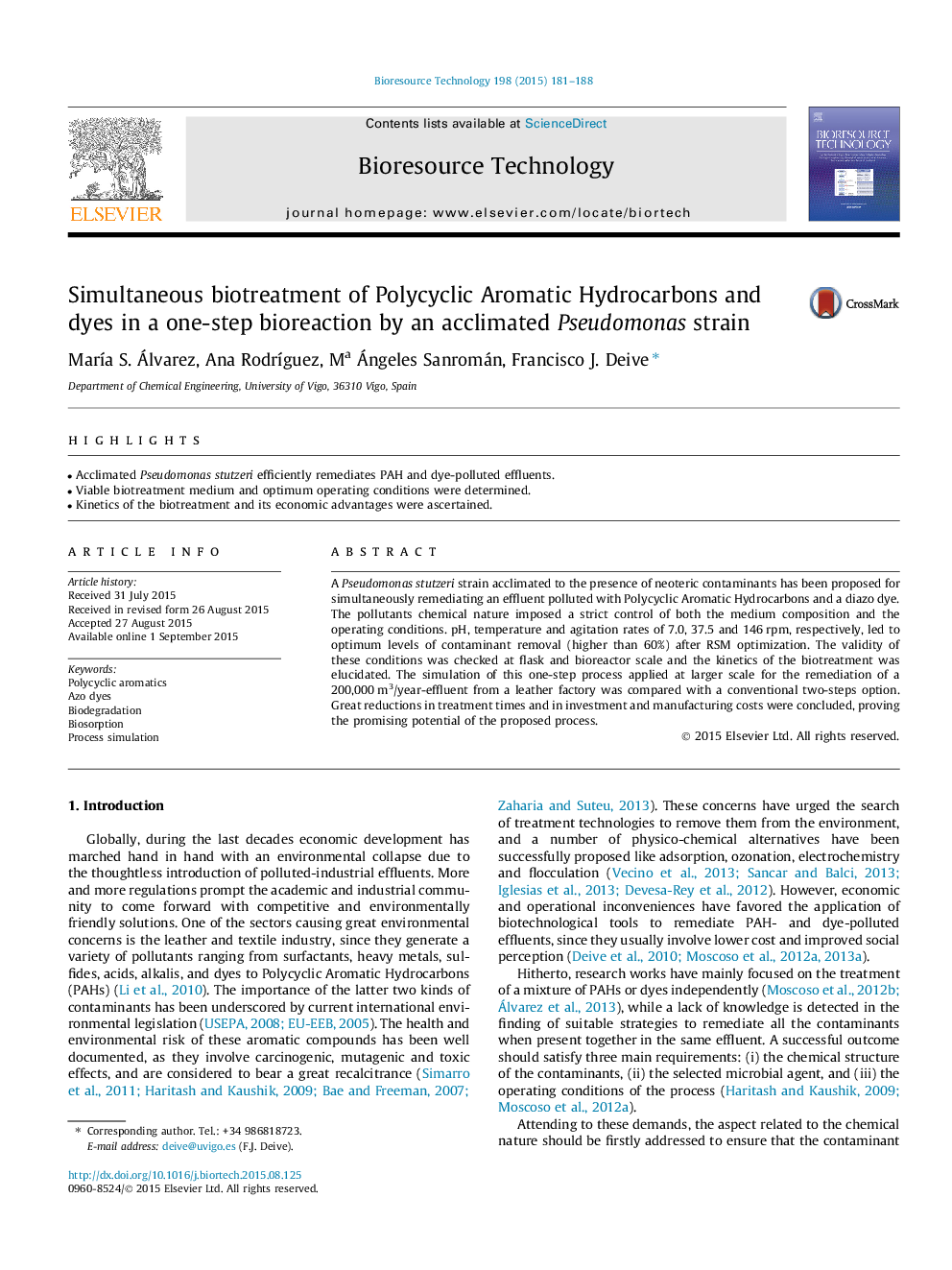| Article ID | Journal | Published Year | Pages | File Type |
|---|---|---|---|---|
| 679460 | Bioresource Technology | 2015 | 8 Pages |
•Acclimated Pseudomonas stutzeri efficiently remediates PAH and dye-polluted effluents.•Viable biotreatment medium and optimum operating conditions were determined.•Kinetics of the biotreatment and its economic advantages were ascertained.
A Pseudomonas stutzeri strain acclimated to the presence of neoteric contaminants has been proposed for simultaneously remediating an effluent polluted with Polycyclic Aromatic Hydrocarbons and a diazo dye. The pollutants chemical nature imposed a strict control of both the medium composition and the operating conditions. pH, temperature and agitation rates of 7.0, 37.5 and 146 rpm, respectively, led to optimum levels of contaminant removal (higher than 60%) after RSM optimization. The validity of these conditions was checked at flask and bioreactor scale and the kinetics of the biotreatment was elucidated. The simulation of this one-step process applied at larger scale for the remediation of a 200,000 m3/year-effluent from a leather factory was compared with a conventional two-steps option. Great reductions in treatment times and in investment and manufacturing costs were concluded, proving the promising potential of the proposed process.
